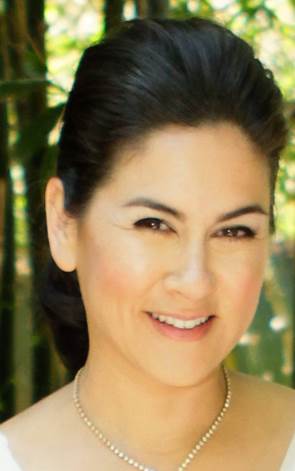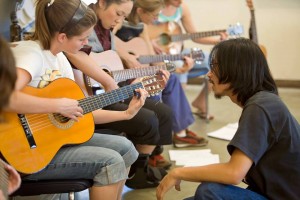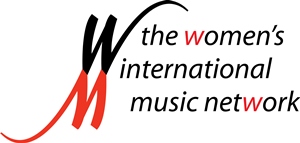The WiMN’s Front and Center is a weekly column that showcases accomplished women who work in the music and audio industries. We spotlight successful female performers, manufacturers, retailers, educators, managers, publicists, and everyone else in between. Want to be featured? Learn how here.
Front and Center: Guitars in the Classroom Vice President, Anna Ress
 Founded in 1998, Guitars in the Classroom provides remarkable, free programs for teachers to involve music in their classrooms. Whether students are studying English, math, science, physical education, social studies, visual arts or other topics, GITC gives teachers the tools they need to enhance the learning of a variety of subjects through music.
Founded in 1998, Guitars in the Classroom provides remarkable, free programs for teachers to involve music in their classrooms. Whether students are studying English, math, science, physical education, social studies, visual arts or other topics, GITC gives teachers the tools they need to enhance the learning of a variety of subjects through music.
As the youngest board member ever elected–and the first woman elected to the executive committee–GITC Vice President Anna Ress is doing her part to make sure the goals of the organization are met and then some.
As a lifelong musician, writer, strategist and public relations guru, GITC allows Ress to blend her passion for music with her talents for marketing. As a result, she has helped the organization see tremendous growth, and today, Guitars in the Classroom has reached over 800,000 students and counting.
To learn more about Guitars in the Classroom, click here.
WiMN: Tell us about Guitars in the Classroom. What is the mission of the organization?
AR: The goal of Guitars in the Classroom is to put a guitar in every teacher’s hand and music in every classroom. One important distinction is that we’re not trying to replace music programs or serve as a music education organization. It’s more about integrating music into the everyday curriculum of classrooms.
We offer free programs that are funded regionally (or by district or school) which train teachers for free. Teachers can come in once a week or participate in workshops where they learn the basics of guitar, and we equip them with the skills and confidence they need to bring music into their classrooms. Then, they can start playing with their students and write songs together about a topic they’re already studying–the program is meant to enhance the curriculum. GITC executive director Jess Baron is an educator, and we have super qualified teacher trainers who have been in the education system for a while, and are also avid musicians. So they connect with teachers in a way that is just really remarkable.
Many teachers are struggling to meet a lot of the requirements of the Common Core curriculum that was instituted this year. We’ve been able to flex and adapt with that and provide a framework that actually helps the teachers to meet all these Common Core standards, and do it in a really fun way that reaches the kids.
We hear it back from teachers who tell us about how much their students love the program. From the preschool level all the way up through college level biology courses, we hear the songs that they’re writing and it’s really amazing. We’ve trained over 10,000 teachers nationwide, and have reached over 800,000 kids so far. Plus, we’ve started some programs in Canada, and abroad.
WiMN: What would you say are some of the benefits to introducing music or guitar to these students?

AR: First of all, it’s an opportunity to introduce children to music. Around 78% of the students that we’re reaching are in Title I schools, which might not necessarily have the funding or the resources to include these kinds of music programs in classrooms. We’re able to introduce these students to music in a way that is easy and approachable, and they can really learn to love it at a young age.
Also, you always hear about how in the guitar industry, over 90% of guitar players are men, or statistics that are around that. What’s interesting is that a majority of schoolteachers are women. Actually, 80% of the people we’ve trained are women, so we’re really setting an example for these children that 1) women can play guitar and 2) you can have music in your everyday lives. Through our partnerships in the industry, we’re reaching out to a lot of influential women in music, but also leading by example. We’re teaching schoolteachers to bring music into their classrooms and in the process creating life-long guitarists.
WiMN: How can teachers bring Guitars in the Classroom to their school?
AR: Shoot us an email. We love to get emails from teachers. Word-of-mouth is one of our most powerful marketing tools. That’s one step to getting an introduction into a district or into a region to get a program set up. Usually it’s a matter of finding a sponsor who can fund the program or whether we can raise a grant to cover the program. But with that in mind, our goal is to bring these programs free-of-charge to the teachers and students.
So, just pick up the phone, shoot us an email, and we would love to hear from teachers all over the country. We’re always starting new districts. It’s exciting.
WiMN: What instrument do you play?
AR: So, I’m not a guitarist really. I’m a violinist. I’ve been a violinist since I was five. It’s something that’s been with me my whole life. I played in symphonies and chamber groups all through college. I still play with a quartet here in Los Angeles. My husband’s a musician too, and he’s also on the board of Guitars in the Classroom. We have music in our lives everyday and I can’t imagine being without it.
WiMN: What would you say is the most gratifying aspect of working with Guitars in the Classroom?
AR: I’m a communicator, and it’s been a personal career goal of mine to integrate my love of music with that I do professionally. So, personally, it’s very gratifying for me to be able to immerse myself and apply some of the skills that I have professionally to this organization. But it’s also been a huge leadership and development opportunity for me to be able to work with folks in the music industry, including artists.
Also, when you attend one of these teacher-training programs and you see the teachers learning from our trainers–whether it’s Jess or any of the other trainers–you see how excited they are. I actually sat in on a course, and within one session I was playing a guitar with open tuning and writing songs. It was really amazing and exciting for me, so that sealed the deal.
WiMN: Who are some of your female role models that work in the industry?
AR: I think it’s not so much about role models but about peers and partners. This idea that we have to “catch up” or prove ourselves in the industry actually kind of helps to reinforce this idea that there is an imbalance. Obviously, the women leaders in this industry are just as capable and powerful.
We have a number of women in the music industry who work with our organization and have been a tremendous help and provided leadership. Janet Godin of Godin Guitars is on our board and she’s been so instrumental in helping us get this program going in Canada.
Jasmin Powell, who is at Dunlop, has also been a huge help. We’ve gotten great guidance from Mary Luerhsen at NAMM, and the NAMM Foundation.
We’ve also been partnering with a lot of artists including guitarists like Muriel Anderson, who does the All Star Guitar Night at NAMM–she supports GITC programs every year, and Muriel’s Music for Life Alliance funded our Canadian program. Vicki Genfan, who was Guitar Player magazine’s “Guitar Superstar” a few years back, has been a great advocate for our work.
WiMN: Can you share your experience as a woman working in this industry? Have there been challenges?
AR: If you want to be taken seriously, take yourself seriously. It’s not even a question, you know? When you go to the NAMM show, there’s a very real excitement about being at the show, it can be sensationalist and a little sexist. You can feel some of that and it’s just part of rock and roll, right? It’s fine to go and enjoy that, but at the same time, I don’t think you have to commit yourself to any kind of role or identity.
I really feel like, as a woman, I don’t have anything to be defensive about, so the question of my experience as a woman in the industry is hard for me to answer because I don’t know it as anything but. For the most part, people are very supportive. If you’re confident, self-assured, ask for help when you need it and take yourself seriously, then I think other people will too.
WiMN: Looking back, what was this past year like for the organization? What’s in store for 2014?
AR: We had quite a year of tremendous growth organizationally and also with our programs. We were able to get a foundation and build our program in Canada, which has been a huge win for the organization. We’re really looking forward to expanding that more next year, in addition to continuing the rich partnerships with our artist advocates.
Our executive director Jess Baron has also been working very hard to gain visibility and get ourselves out there a little more. For example, we were featured in Glamour magazine’s “31 Days of Giving,” which features charities and organizations that people can give to. We also received a very generous donation of about 1,000 guitars from Taylor Guitars in San Diego. We’re deepening some of our local relationships with local music industry companies, but also trying to extend our reach. We’re growing quite a bit and it’s very exciting!








